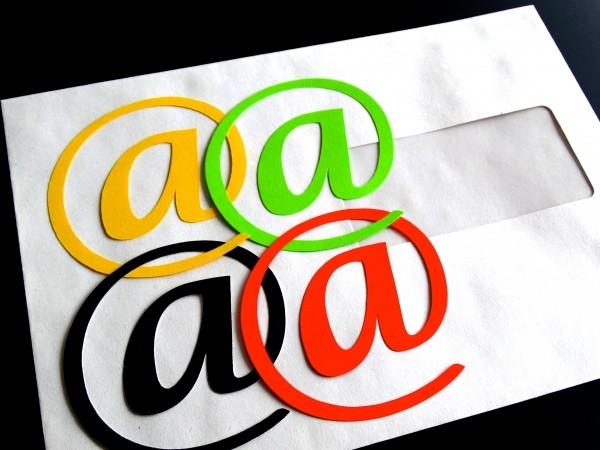
Churn is an issue of utmost concern to SaaS. The standard tends to be that your churn rate needs to be less than 5%, otherwise your SaaS could be in trouble.
After all, there’s no sense in spending a whole lot on marketing for acquisition if you’ve got a problem hanging onto customers in the long term, right?
There are a number of strategies you can put in place to combat churn, including quality onboarding processes and focusing on customer engagement, but you’ve also got to be paying attention to another common churn cause: failed credit card payments.
Credit cards may decline for a number of reasons. Perhaps the client didn’t have the funds available, but more often, you’ll find the card has expired. You can expect around 3% of your customers to have an expiring credit card each month, which could be 36% of your customers across a year. If you add in any other reasons for credit card payments failing, you’ve got quite a significant segment of your customers.
So, if you haven’t already, it’s time to do something about failed credit card payments, beginning with initiating dunning emails:
Dunning Emails
The term dunning comes for the word “dun”, which means to repeatedly ask debtors for payment. While this might conjure up unpleasant images of collections agencies or beefed up collectors removing furniture from a house, dunning emails shouldn’t be presented in this way to your customers.
The idea is that you should set up a series of emails, starting with pre-empting declined payments. How? Well, if the customer is a subscriber with you, their credit card details are already in your system so you can find when their card is going to expire.
The easiest way to set up these emails is with a tool which will analyze customer activity and trigger emails for you. If you happen to be a Stripe user, this is exactly what Stunning will do for you.

#1. Timing
First of all, if you’re trying to get the customer to update their credit card details before a transaction declines, generally getting in early is better. From our experience (and the same goes for dunning emails), customers often don’t respond to your first email. It’s usually from the second or third email that we see a better response.
We suggest using a good dunning software which picks up on expiring credit cards early and starts to send out email requests to update credit card information from at least one month prior to expiry.
As for the timing of your emails, whether you are sending them before or after a payment failure, you need to look for the right balance between communicating urgency and being plain annoying. We’ve found that sending three emails across the space of a week is a good place to start, but we always suggest testing to see what works best for your particular business.
#2. Return address and subject line
Next up, when you’re sending your emails, make sure you are sending from an email address which customers are able to respond to. “Do not reply” addresses can just add an extra level of frustration to the process for the customer because you haven’t made it easy for them to reply or ask any questions if they wish to do so.
As for the subject line of your email, make it clear why you are sending it so that the customer immediately knows there is a problem with their subscription. For example, your first email subject might be as simple as; [SaaS Name] Please update your billing information.
If the customer doesn’t respond to that first email, we would usually follow up with similar subject lines, except with “second notice” or “final notice” included. We usually send out three emails, but you might decide that four or five works better for you.
Again, the subject line is something which you may like to test out to see what gets the best response. We still suggest making it clear as to the purpose of the email, but of course you can reword it to suit.
#3. Tell them what happened
There’s no sense in fluffing around — get straight to the point and explain to the customer what happened that is causing you to write to them. For example:
“Hi George,
We just tried to charge your credit card for your subscription renewal at [SaaS Name], however it failed due to [reason].”
Simple and free of fluff. There is no need to pander or sound like you’re wheedling.
#4. Explain next steps
Every email you send out to customers should have some kind of clear call to action, and your dunning emails are no different. After telling them about their declined payment, give them a clear path to update their credit card details. For example:
“To keep your account active, we need current credit card information. Please update your credit card details by clicking here [insert link], within the next 7 days. Your account will be automatically cancelled after 7 days if payment details are not updated.”
There are a couple of important points here which you should include with explaining those next steps:
- Give the customer a direct link within the email which doesn’t require them to login, open another window or click around looking for where they need to go to update payment details. The idea is to make it as simple as possible for them.
- Give them a time limit. If you leave it wide open, you won’t convey any kind of urgency and the customer might put the task on the back-burner. Tell them how long they have before their account will be cancelled.
#5. Include value proposition
We like to try to personalize the emails we send out and remind the customer of value we have delivered to them already. It helps to keep in the minds of your customers why it is that they need you so that hopefully, they’re not hesitant to update their billing information.
For example you might say something like:
“[SaaS Name] has helped you to [specific value delivered] over the last month, so it’s important that you keep your account active to avoid any disruptions to this.”
It never hurts to remind people of the genuine value you provide them with, especially at this time where many are feeling “subscription fatigue” over the many different subscription products they probably have. It’s relatively easy for someone to do nothing about updating payment details if they don’t feel a compelling reason to keep the subscription.
#6. Increase the urgency
If the customer has not responded to your email the first time around, escalate the urgency of your tone in each email. That is not to say you should be demanding or threatening in any way (no one likes that “debt collector” image!), but you shouldn’t leave it uncertain as to how urgent it is that the customer updates their billing information.
Terms such as “second notice” or “final notice” are often enough to trigger people into action. You should also keep them aware of how much time they have, for example “your account will be cancelled in two days if payment information is not updated.”
You can keep things to the point without being unkind. Always remember that you want to keep your professional image with customers.

#7. Keep a professional tone
The words we use matter. You only have to look at the inflammatory responses banks often receive over delinquent mortgage accounts to get some examples of how not to treat customers. If you’re going to take a position that customers find threatening or unfair, the chances are they will not feel inclined to stay with you.
At the same time, coming across as begging is also not a good idea. We’ve seen emails along the lines of “please come back!” and they really do just take the tone of trying to wheedle something out of the customer.
Think about the language you use overall and what the likely response might be. For example, we prefer to say something like “we tried to charge your credit card, however it failed” rather than “your payment was declined.” It’s a subtle difference, but the second one sounds a bit more like you’re accusing the customer of something, whereas the first one is simply saying the card failed.
Final Thoughts
Staying on top of churn in your SaaS is not always easy, but you can stay ahead of the game if you implement a strategy for dunning. Credit card payment declines tend to represent a significant proportion of SaaS customers, so they are worth pursuing.
Use a good dunning software to set up automated emails so that you’re not having to manually look for upcoming credit card expiries or look for payment declines yourself.
Following the outlined steps to send out effective dunning emails can help you to combat churn and improve your overall SaaS revenue. We’d consider this to be a “quick win” that most SaaS will see results from.
